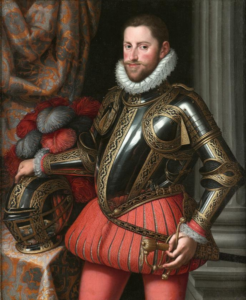A duel in 1590 between Bori Mihály and Bey Ibrahim

Duels on the Borderland
The duels between the Hungarians and the Ottomans had strict rules that both sides had to keep. Honor and reputation were the most valuable things for the warriors of the Valiant Order, let they be Turks or Hungarians. Here, you can read more about the Valiant Order: https://www.hungarianottomanwars.com/essays/members-of-the-valiant-order/
These fights were constantly parts of the “small war” that was raging between major wars along the 1,000-mile-long Borderland. As these duels took place mostly in time of a Truce, the duelists had to get a permit from their superior which was not an easy process. According to Takáts Sándor, the underpaid Hungarian warriors regarded these duels (and ambushes, ad-hoc duels which were not legal at all) as the source of their living. Ransoming a rich Bey was a good income. Especially, when the Ottomans appointed a new Pasha who was often challenged right after his arrival to his position.
We have many letters of challenge that were exchanged between the Turks and the Hungarians. When the duel was approved, the participants were allowed to bring along their fellow warriors of equal size. The weapons and the terms were agreed and the “truth-seers” (the judges) appointed the spot for the fight. According to Takáts Sándor, each duel was followed by a feast where the Ottomans and the Hungarians were celebrating together, often engaging in horse races and other games.
Now, let us read about a duel that has become mad bloodshed because both sides violated the rules. Thanks to Szibler Gábor who found it in the Chronicle of the Hungarians written by Istvánffy Miklós (1538-1615). Note, that I am intentionally using the Hungarian names in the Oriental name order in the case of Hungarian names.

The terms and conditions of the duel
It was Bory Mihály, Vice-Captain of Bakabánya who had a dispute he wished to settle with Bey Ibrahim of Drégelypalánk. Allegedly, they quarreled over the ransom of a captured soldier which served as a reason for the duel. You can read more about Bakabánya and Drégelypalánk on my page:
https://www.hungarianottomanwars.com/kingdom-of-hungary/bakabanya/

https://www.hungarianottomanwars.com/kingdom-of-hungary/dregely/
The day of the duel: 14 May 1590

In the meantime, Vice-Captain Bory came to know that Ibrahim wanted to ride a wild and biting horse during the duel. These horses were trained to bite the opponent’s horse or the rider. Once they bit into the flesh or clothes, they didn’t let it go.





As for Sibrik Gáspár, we have to add that after this incident, he had to leave for Transylvania. He was welcomed there because he had served in the army of King Báthory István of Poland. Prince Báthory Zsigmond of Transylvania appointed him as the Chief Captain of his Court troops. It was Sibrik who carried out Báthory’s bloody order in 1594 and arrested Kendy, Báthory’s opponent. He also executed him.
Sources: Szibler Gábor and Takáts Sándor
Dear Readers, I can only make this content available through small donations or by selling my books or T-shirts.
If you like my writings, please feel free to support me with a coffee here:
You can check out my books on Amazon or Draft2Digital, they are available in hardcover, paperback, or ebook:
https://www.amazon.com/dp/198020490X
or at https://books2read.com/b/boYd81


My work can also be followed and supported on Patreon: Become a Patron!http://Become a Patron!


https://hungarianottomanwars.myspreadshop.com/

https://hungarianottomanwars.myspreadshop.com/all


